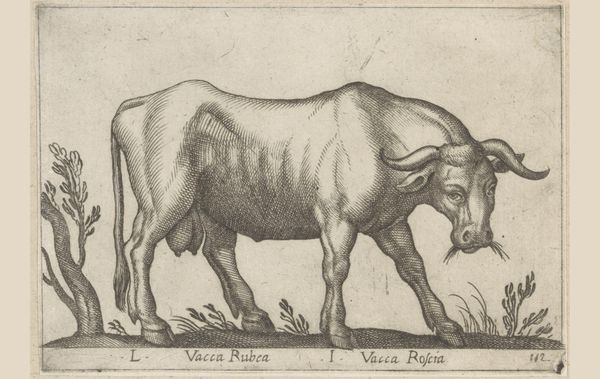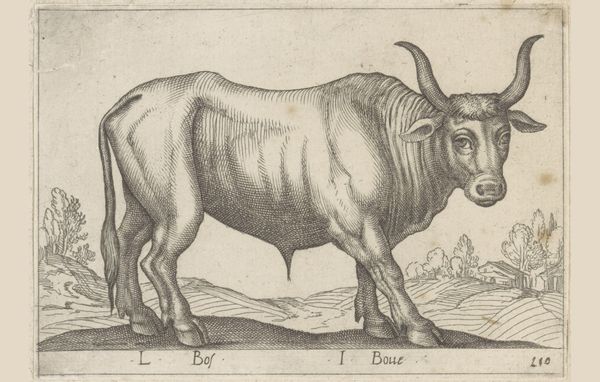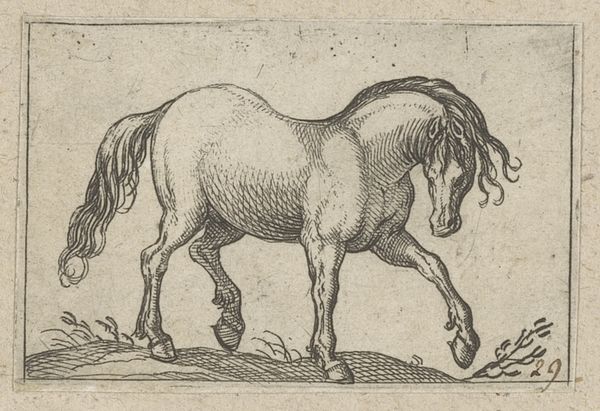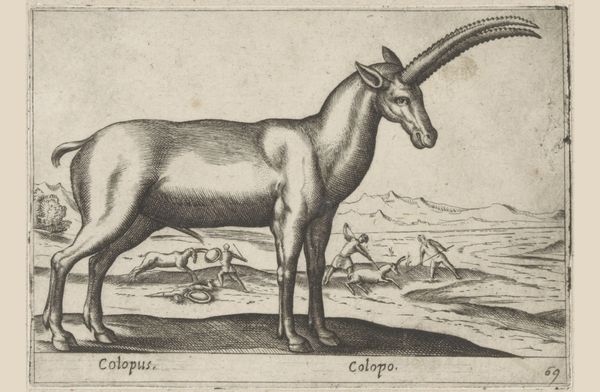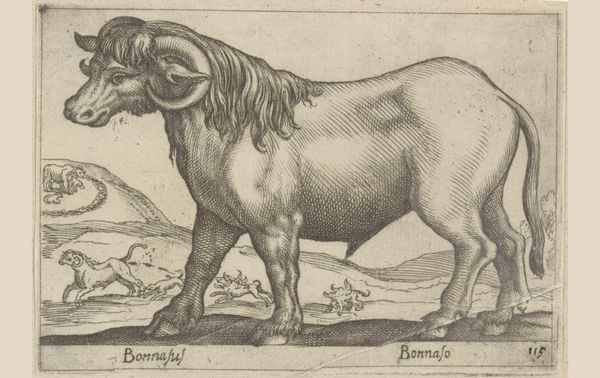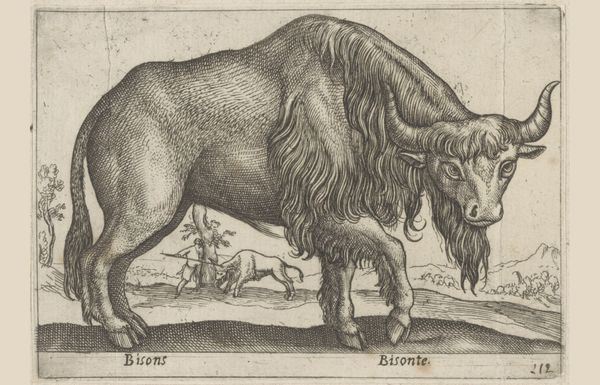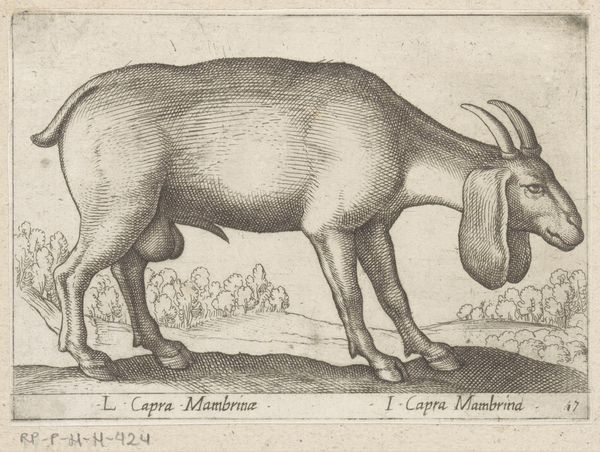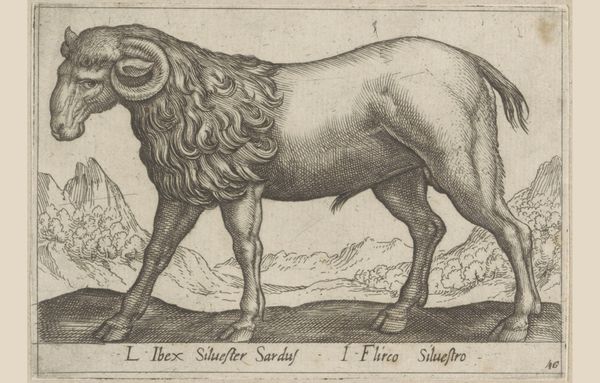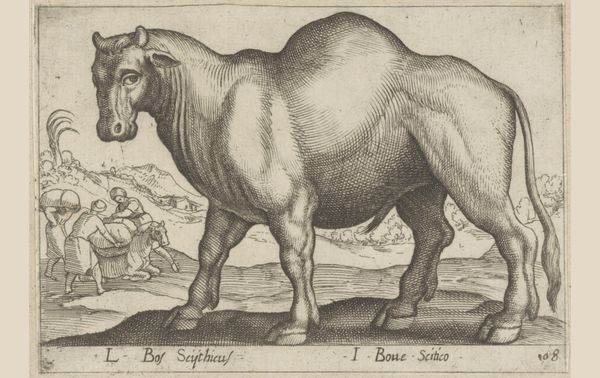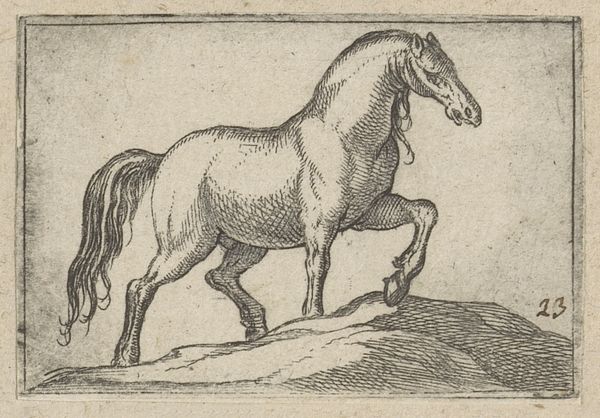
drawing, print, ink, engraving
#
drawing
#
baroque
#
animal
# print
#
figuration
#
ink
#
line
#
engraving
Dimensions: height 95 mm, width 137 mm
Copyright: Rijks Museum: Open Domain
Editor: Here we have Antonio Tempesta's "Goat with Six Horns" from before 1650. It’s an ink engraving, and what immediately strikes me is the sheer density of the lines used to create texture. How do you interpret this work? Curator: The density of lines isn't just texture; it's labor. Look at the meticulous process of engraving each line into the metal plate. It speaks volumes about the time and skill invested. This isn't just an image of a goat; it's a document of early printmaking techniques and the social status afforded by such refined craftsmanship. Does the material execution influence your understanding of the subject matter? Editor: I suppose I hadn't considered that the act of *making* the artwork was part of its meaning. It does change how I see it; the work becomes less about the animal itself and more about how it represents artistic skill, early capitalism, and even trade since it’s a print. Curator: Exactly! The Baroque period witnessed an explosion in printmaking. Prints like these were commodities, traded and consumed. Considering the materials – the paper, the ink, the metal plate – how does this print participate in a larger network of production and distribution? Editor: The work's reproducibility speaks to how the market consumed art during that time. And looking closer, even the paper seems integral. Curator: Precisely! Thinking about the materials opens up layers of understanding that a simple aesthetic appreciation might miss. Do you agree it transforms the reading of the "goat" itself? Editor: Definitely. Seeing the artwork through this lens really underscores the material realities of artistic production in the Baroque era. I wouldn’t have noticed this without your insight into the historical context.
Comments
No comments
Be the first to comment and join the conversation on the ultimate creative platform.

